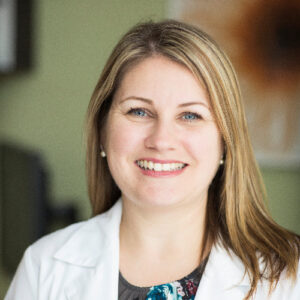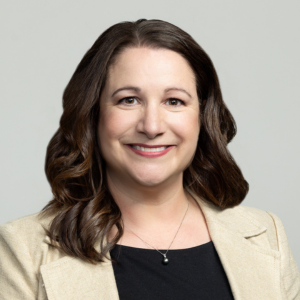It’s time for a look-back period
Everyone needs a good sounding board. For many nurses, that forum is oftentimes a listserv. In commemoration of last year’s big MDS package, Long-Term Living invited three erudite MDS professionals to engage in a civil email powwow on all things 3.0-the good, the bad and the “baptism by fire” that was October 2010.
First, the participants:
Sheri Kennedy, RN, BA, MSEd, RAC-MT, is president and CEO of Knowledge Solutions. An AANAC Master Teacher and author with more than 40 years’ experience in healthcare, Kennedy was a Gold Standard Nurse on the Centers for Medicare & Medicaid Services’ (CMS) RAND project team, conducting reliability and validity testing on the MDS 3.0 prior to its implementation.
Carol Maher, RN-BC, RAC-CT, is a member of the AANAC Board of Directors with more than 15 years’ experience on the MDS. Maher was a member of the AHRQ Technical Expert Panel and RTI’s Technical Expert Panel for MDS 3.0, as well as a Gold Standard Nurse providing training to the California facilities participating in the RAND validation project.
Dawn Diyer, LVN, RAC-CT, is a certified nurse assessment coordinator with 20 years’ experience in long-term care, completing MDS assessments for more than 10 years. Diyer participated in the national MDS 3.0 validation study.
What would you change about the MDS 3.0?
Carol Maher: If I could alter one aspect, it would be to shorten or eliminate the discharge assessments. Since resident interviews must be done within the 7-day look-back window, MDS coordinators had to find new ways of scheduling assessments. It is no longer easy to change Assessment Reference Dates (ARDs) and no one on the team can drop the ball.
This could be managed with the assessments previously required. However, the addition of the discharge assessments requires so much additional work that it seems to be the straw that breaks the camel’s back. Doing large assessments for residents who no longer require a care plan or care seems unnecessary. For example, a resident admitted to the SNF and discharged within a few hours now requires an entry tracking form and a 27-page discharge assessment. Residents who come and go on respite stays need entry tracking forms each time they are admitted and a discharge assessment each time they are discharged.
Sheri Kennedy: I had difficulty focusing on just one thing to change. Then I realized that the common thread between every item I considered was time. The time issues originated with the MDS 3.0 national study where the Gold Standard Nurses and staff who participated were able to complete the assessment in significantly less time than what was required to complete the MDS 2.0. Unfortunately, the tool underwent numerous additions and revisions, resulting in a final product that took longer to complete than the version we studied. And it was the timeline from the original study that was touted as one of MDS 3.0′s advantages. So right out of the gate “the boss” expected completion of the MDS 3.0 to take less time. Thus began the setup to fail.
The Care Area Assessment (CAA) process was slightly changed and for many it was the first time they realized how the decision-making phase of the Resident Assessment Instrument (RAI) process was supposed to work. This resulted in a significant increase in workload for MDS nurses who had not previously been working the Resident Assessment Protocols (RAPs).
Finally, although I love the SNF Open Door Forum (ODF) Calls, they have been a source of conflict and confusion. Questions and answers during these calls need to be incorporated in an RAI User’s Manual update, or some other official document. Since not everyone is aware of what is being said, MDS 3.0 data is becoming less reliable.
Now back to the original question: What I would like to change is the time required to complete a reliable and valid MDS 3.0. Some suggestions: pare down the discharge assessment to essential items only; clarify in detail the End of Therapy (EOT) OMRA timing issues in the manual; and allow the interviews to be completed after the ARD in conjunction with all other data collection to limit the number of times the staff needs to interrupt the resident’s routine.
Maher: The EOT OMRAs are to be required when a resident misses therapy for three consecutive days regardless of reason (all tied into how many days the facility is capable of providing therapy per week). As Sheri mentioned, this has been instructed on the ODF calls with instructions requiring new therapy evaluations in order to begin collecting therapy minutes again. This was never added to the RAI manual, however, even though there has been a manual update. This means facilities that are proactive and listening to the ODF calls are getting less reimbursement when completing the EOTs as instructed than the facilities not following or knowing the new rules. And the fiscal intermediaries seem unaware of the instructions given on these calls as well.
Facility nurse’s perspective
Dawn Diyer: I believe the assessments are more complete and reflect care a bit better than with MDS 2.0. However, the one thing I would change would be the discharge assessments. If discharges are scheduled, those interviews can be planned for. But unexpected discharges have the team scrambling for accurate information. I have a difficult time understanding why assessments should be completed when they do not have financial significance. I would, however, not change the interview items as I feel they are a valuable asset to the MDS 3.0 assessment process.
Describe some advantages of MDS 3.0 over the previous version
Maher: MDS 3.0 is certainly an improvement in hearing the resident’s voice and choice over MDS 2.0. I appreciate that the interviews are scripted to eliminate staff bias about how and what the resident feels, thinks, likes, dislikes.
The pressure ulcer items are also much improved. Not staging the non-pressure ulcers is clinically more compatible. The skin items are burdensome, however, based on sheer volume and the confusing instructions regarding “present on admission” or “not present on admission.”
I think the CAAs are a step in the right direction but would like to see them become prescriptively electronic. They are, in my opinion, the most important part of the comprehensive MDS. These CAAs further investigate triggered problem areas for the resident, and if they were prescriptively electronic, they would be easier to complete and could help facilities with the decision-making process.
Kennedy: Carol, I agree with everything you’ve written. The biggest improvement is the incorporation of resident voice. I know that during the National Study we were able to get to know some residents better in one hour than the staff who had cared for them for five or more years.
There are other advantages to the MDS 3.0 over the 2.0. Specifically, MDS 3.0 uses standardized, valid tests to help identify cognitive status, resulting in more meaningful data to enhance resident care. Functional status can be more accurately recorded with the addition of option 7 under ADL Self-Performance, indicating an activity only occurred one or two times. Plus the overall instructions are clearer in identifying that nursing home staff are the only caregivers from whom data is collected-not family or other non-staff.
Bowel and bladder function doesn’t stop at the identification of incontinence, but goes on to assess for treatment programs. The enhanced diagnoses list and expanded instructions as to which diseases to include in the coding should lead to improved reliability in disease identification. The expanded pressure ulcer section allows for a better tracking system, although the issue of whether an ulcer was present on admission or reentry is not clear and is skewing data reliability.
Maher: The nine-item Patient Health Questionnaire (PHQ-9) scores can be observed over time to determine whether there is improvement or decline in mood. This can have such a helpful role in determining effectiveness of treatment, or whether there is a need to treat at all. The cognition scale is also much more helpful than the staff assessment of decision making.
Diagnosis coding is still problematic. The enlarged list is helpful but the addition of the “active” versus “inactive” has been confusing, especially since some examples show that the diagnosis is affecting ADL function but not being treated and is not considered “active.”
Kennedy: I agree whether a diagnosis is active or not is an issue. It fits back into the previous discussion’s list of “time” problems. To better clarify the point I was trying to make, we now have improved consistency related to diagnoses names. We also have an increased focus on the fact that outdated diagnoses are not to be recorded here. Although that was also true for the MDS 2.0, many overlooked that definition. While it’s not perfect, great advancement has been made toward improved accuracy in coding this item.
You mentioned prescriptively electronic CAAs earlier. Can you give me more detail?
Maher: Prescriptively electronic like the MDS itself-having built-in questions that can lead the facility staff through the assessment and decision-making process. My company tested an electronic RAP for CMS that asked specific questions and then wrote a report at the end of the process. The reports were helpful to the staff and could be shared with physicians.
Facility nurse’s perspective
Diyer: Carol and Sheri hit the nail on the head with their responses. Residents enjoy talking with our team and feel more involved in their care, referring to the interviews as “conversations.” Expanding the pain assessment was long overdue. This has assisted us with better managing our resident’s pain as well as educating our staff. The pressure ulcer section also allows us to show actual progress and decline. We are able to prove presence on entry.
How well were providers prepared for implementation?
Kennedy: The MDS 3.0 is a revised assessment tool that incorporates several new processes for data collection. These changes were implemented to facilitate a more accurate, reliable and valid functional assessment on which to base payment, measure quality and drive the survey and certification process. Any inaccuracy to this data potentially impacts facility liability and financial risk.
The data on the MDS 3.0 is more finite and exact than on prior versions, thus presenting more opportunity for exposure. The detailed instructions leave less room for subjective interpretation than ever before. This leads to two areas of increased risk over prior assessments. Specifically, any confusion over the instructions and/or inaccurate data collection place the facility at higher risk than ever before. Education is therefore imperative-collaboration and support from the top down essential.
Based on attendance at my seminars, I saw more participation than I’d seen in years, indicating more facilities worked to be better prepared to implement the MDS 3.0 than they had been for some other significant changes in the past. Unfortunately, those who were trained early on and then spent the summer practicing interviews and assessments and implementing policies and procedures to make sure they were ready may have missed the September update and subsequently missed the mark by not operating with the most current instruction. Within days of implementation, CMS became aware of significant software issues, requiring them to close down the submission process until it was fixed. Not everyone got the message, so this led to even more confusion and frustration.
Maher: MDS 3.0 began with an explosion in October when facilities learned at the last minute that there would be a RUGs transition, requiring MDS coordinators and interdisciplinary teams to complete two MDSs on residents when they all really needed to learn how to manage the new assessment process itself. And then the software crashed. It was without a doubt a baptism by fire for all facilities, no matter how prepared they were.
Facilities struggled to determine how much manpower would be needed for the new assessment instrument. Some facilities attempted time studies while others decided to hang on and wait. Most companies either provided MDS 3.0 training or sent their MDS coordinators to training. The frequent RAI manual changes prior to October made it difficult to keep on top of the information. The uncertainty of whether a hybrid version of RUG-III or the previously delayed RUG-IV would be the payer kept facilities unsure of their financial status for months.
I still see the stress that additional time burdens are having on facilities. When trying to maintain the same staffing prior to MDS 3.0, the MDS team members often become so stressed that they end their employment.
Kennedy: As momma used to say,“You only get one chance to make a good first impression,” so by November 2010 some were viewing the MDS 3.0 as a time-consuming, onerous task with little or no additional benefit over the 2.0.
It is this lack of consistency, lack of continuity in delivering the same message in all venues that has created the greatest inequities. When we as Gold Standard Nurses tested the then proposed MDS 3.0 for reliability, it was identified that we had reached unprecedented numbers bordering 100 percent on some items. At this time-although I’m not aware of any statistical analysis-I would deductively conclude that this lack of continuity in delivering instructions has resulted in a much lower reliability than originally yielded. This in turn has resulted in a platform that is generating unequal payment and causing facilities to be viewed inconsistently, thus placing them at greater risk. However, it is not so much the result of a lack of preparation on the part of facilities as it is the ongoing changes by CMS.
Facility nurse’s perspective
Diyer: Being part of the National Study, I had a bit of an advantage, or so I thought, before MDS 3.0 was implemented. By October 1st, CMS would issue two manual updates. I prepared the team by having them complete practice interviews, which allowed them to be familiar with and slowly ease into the process. Overall, MDS 3.0 assessments take all members of the team to work closely together. Without constant communication and teamwork the process will not work smoothly.
Long-Term Living 2011 August;60(8):30-33
I Advance Senior Care is the industry-leading source for practical, in-depth, business-building, and resident care information for owners, executives, administrators, and directors of nursing at assisted living communities, skilled nursing facilities, post-acute facilities, and continuing care retirement communities. The I Advance Senior Care editorial team and industry experts provide market analysis, strategic direction, policy commentary, clinical best-practices, business management, and technology breakthroughs.
I Advance Senior Care is part of the Institute for the Advancement of Senior Care and published by Plain-English Health Care.
Related Articles
Topics: Articles , Medicare/Medicaid











